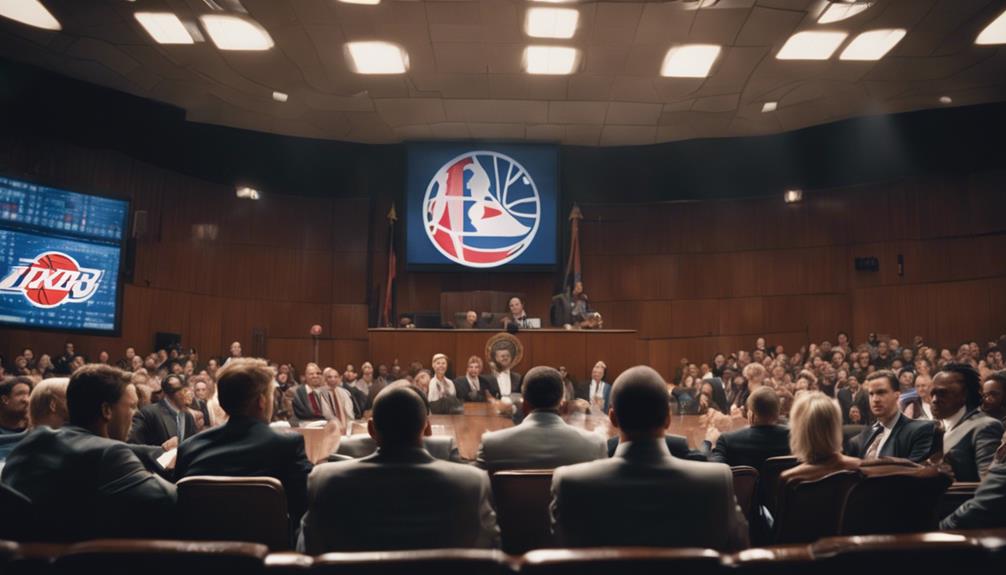Helena Helmersson has stepped down as CEO of H&M after four years, citing personal demands. Her resignation comes amid declining sales and a recent advertising controversy that has harmed the brand's reputation. In the fiscal year 2022-2023, the company's earnings fell short of expectations, with a 4% sales drop compared to the previous year. Daniel Erver, previously with H&M for 18 years, has taken over as CEO. The change presents both challenges and opportunities for the company. Adapting to consumer preferences and market competition will be critical for H&M's future success and sustainability. Further insights await.
Key Takeaways
- Helena Helmersson resigned as H&M's CEO after four years, citing personal demands amid ongoing challenges in the retail environment.
- H&M's financial performance has weakened, with a 4% sales drop exacerbated by high inflation and rising interest rates.
- A recent advertising controversy damaged H&M's brand reputation, leading to public backlash and a need for improved marketing strategies.
- Daniel Erver, with 18 years at H&M, has been appointed as the new CEO, bringing fresh insights during this transitional phase.
CEO Resignation Details

Helena Helmersson's resignation as CEO of H&M marks a significant turning point for the company, as she steps down after four years in the role due to personal demands and challenges.
Having joined H&M in 1997 and ultimately taking the helm in January 2020, Helmersson's leadership was characterized by attempts to steer the brand through a rapidly changing retail landscape.
Her departure, however, has prompted immediate market reactions, with shares dropping by 12% following the announcement.
Daniel Erver, who brings 18 years of experience within the company, has been appointed as her immediate successor.
This leadership change occurs during a period of heightened scrutiny and competitive pressure, necessitating strategic adjustments to stabilize operations and restore stakeholder confidence.
Financial Performance Overview

Following the leadership change, H&M's financial performance has come under scrutiny, particularly after the fiscal year 2022-2023 revealed weaker-than-expected earnings.
Key indicators of this decline include:
- A 4% drop in sales from December 2023 to January 2024, contrasting with a previous year's 5% increase.
- Economic challenges such as high inflation and rising interest rates have greatly impacted consumer purchasing power.
- The fourth quarter saw improved sales, attributed to more favorable autumn weather conditions following an unusually hot start.
- Stakeholders are increasingly concerned about the brand's ability to adapt in a competitive landscape marked by fast-fashion rivals.
These factors underline the pressing need for strategic adjustments as H&M navigates its current challenges.
Advertising Controversy Impact

The recent advertising controversy surrounding H&M has considerably impacted the brand's reputation and highlighted the need for a reassessment of its marketing strategies.
The backlash from the back-to-school advertisement, which was criticized for allegedly exploiting children, has sparked significant public outcry. This incident not only led to the removal of the ad but also forced the company to acknowledge the missteps in its promotional approach.
H&M's commitment to reevaluating its future advertising strategies indicates a recognition of the importance of sensitivity and ethics in marketing communications.
As consumer expectations evolve, it is essential for H&M to adopt a more responsible and inclusive advertising framework to restore trust and align with contemporary societal values, ensuring long-term brand loyalty and success.
Competitive Market Challenges

H&M's recent advertising missteps come at a time when the brand is also grappling with intensified competition in the fast-fashion market. The landscape is increasingly challenging, requiring H&M to adapt quickly to maintain its market position.
Key competitive challenges include:
- Aggressive Rivals: Brands like Zara and e-commerce platforms such as Shein are capturing consumer attention with innovative marketing strategies.
- Market Share Pressure: H&M's market share has been eroded due to the rise of discount retailers and online alternatives.
- Shifting Consumer Preferences: An increasing demand for sustainable and ethically produced fashion is reshaping consumer choices.
- Brand Reputation: Recent controversies have further complicated H&M's standing in a crowded marketplace.
Addressing these challenges will be crucial for H&M's future growth and sustainability.
Leadership Transition Insights

A significant leadership change at H&M, marked by Helena Helmersson's resignation, presents both challenges and opportunities for the retail giant as it seeks to navigate a tumultuous market landscape.
Daniel Erver, her successor with 18 years of experience at H&M, steps into this role during a vital period characterized by declining sales and reputational damage from recent controversies. His appointment is expected to bring a fresh perspective, particularly in marketing and strategic initiatives aimed at stabilizing the brand.
Maintaining stakeholder confidence will be essential as the company adapts to evolving consumer preferences and intensifying competition.
This leadership shift may ultimately redefine H&M's approach, focusing on sustainability and innovation to regain market share and enhance brand reputation.
Frequently Asked Questions
What Are H&M's Future Plans for Sustainable Fashion Initiatives?
H&M's future plans for sustainable fashion initiatives include enhancing circularity through increased use of recycled materials, expanding eco-friendly product lines, and committing to transparency in supply chains, aiming to align with evolving consumer expectations for sustainability.
How Will the CEO Transition Affect Employee Morale at H&M?
The CEO change may greatly influence employee morale at H&M. A shift in leadership often revitalizes staff engagement, fostering optimism. However, ongoing uncertainties necessitate effective communication and support to maintain motivation and confidence among employees.
What Strategies Will H&M Implement to Regain Customer Trust?
H&M will likely implement strategies focusing on transparent communication, enhanced customer engagement, ethical advertising practices, and sustainable initiatives. These efforts aim to rebuild consumer confidence and align brand values with evolving customer expectations in the retail landscape.
How Does H&M's Supply Chain Impact Its Financial Performance?
H&M's supply chain greatly impacts financial performance through cost management, inventory turnover, and responsiveness to market demand. Efficient supply chain operations can enhance profitability, while disruptions may lead to increased expenses and reduced sales.
What Role Does Digital Marketing Play in H&M's Recovery Strategy?
Like a compass guiding a lost traveler, digital marketing plays a pivotal role in H&M's recovery strategy, enhancing brand visibility and engagement. By leveraging social media and targeted campaigns, H&M can effectively reconnect with consumers and drive sales.
Conclusion
The resignation of Helena Helmersson as CEO of H&M, amidst financial struggles and a controversial advertising campaign, signifies a critical juncture for the retailer. Helmersson’s departure comes at a time when the company is facing increasing pressure from both customers and investors. The downfall of disgraced CEOs has put a spotlight on corporate leadership and accountability, and H&M will need to navigate this challenging landscape carefully in order to maintain its position in the retail industry. The search for a new CEO presents an opportunity for the company to reevaluate its strategies and restore confidence among stakeholders.
Daniel Erver's appointment as her successor presents an opportunity to navigate the turbulent waters of a competitive market.
Strategic innovation and a reassessment of marketing tactics will be essential in restoring stakeholder confidence and addressing evolving consumer preferences.
In an era reminiscent of the classic retail battles, H&M must adapt or risk being outpaced by rivals.









